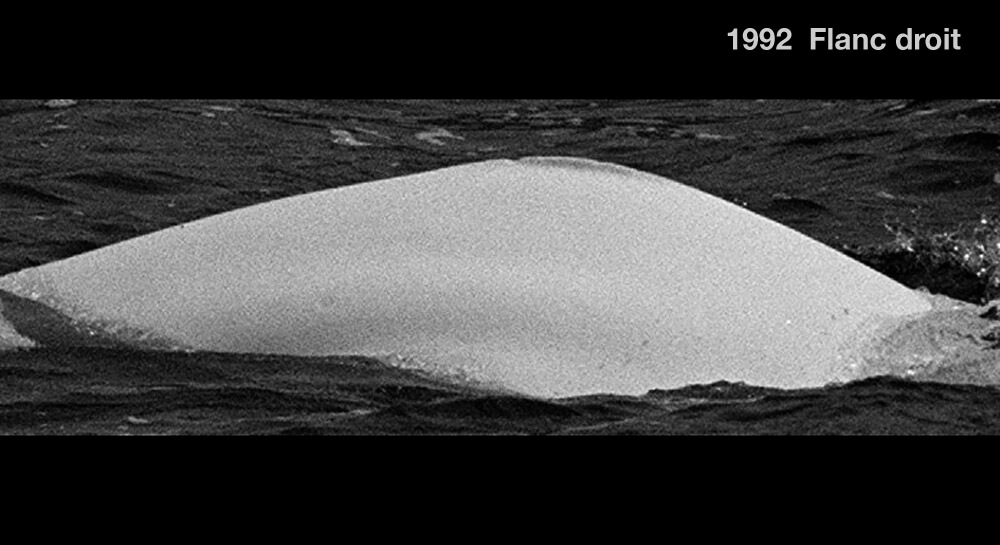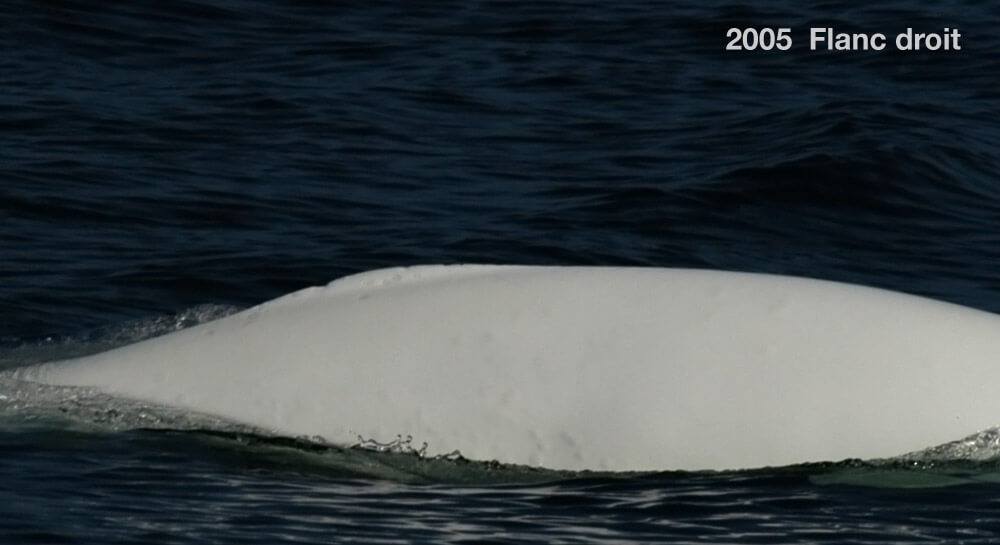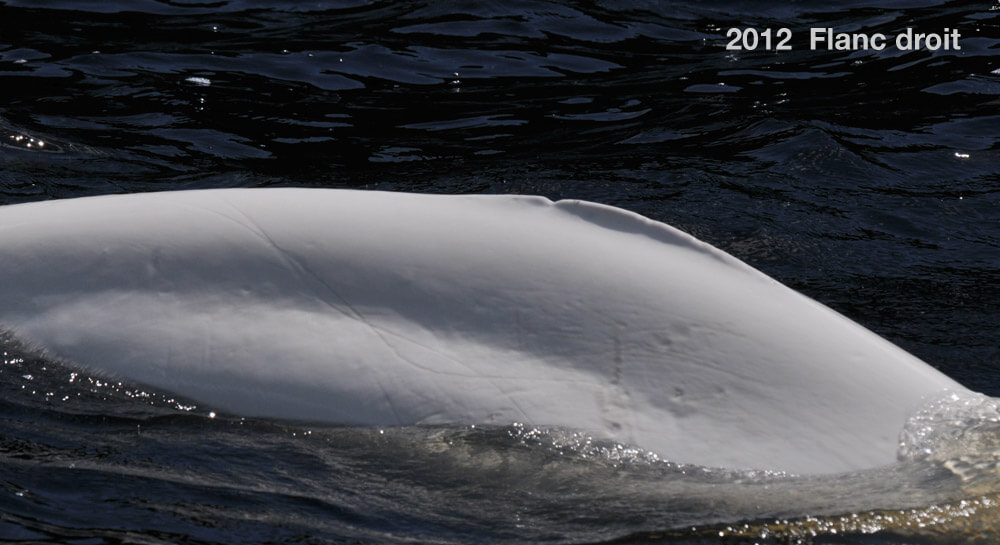April
Beluga


Adopted by le Regroupement des Plaisanciers du Québec
-
ID number
DL0470
-
Sex
Presumed female
-
Year of birth
Before 1980
-
Known Since
1992
Distinctive traits
April is recognizable by the scar on her left peduncle consisting of two small dots very close to one another. Although they’re not very deep, the gashes in her dorsal crest nevertheless allow her to be identified from the right.
Life history
Our first encounter with April goes back to the summer of 1992. She was already white at the time. Knowing that belugas fade to white between the ages of 12 and 16, we surmise that April would have been born before 1980.
Her small size, habits and presence in herds comprising adults and young suggest that April is a female of the Saguenay community. Notably, she has been seen regularly in the company of DL0030, DL1757 and Élizabeth, i.e. other females of the Saguenay community who are well known to our team!
In their summer range, cows form large communities in which they tend to newborns and young. These communities are associated with traditional territories. Associations between females of the same community are generally not stable and can vary according to the females’ reproductive status, for example if they are pregnant or accompanied by young.
April has been regularly observed with very young belugas. However, to date our observations have not yet allowed us to determine with certainty whether or not these were her own offspring. It is difficult to establish mother-calf relationships with certainty. Eventually, once we’ve performed a biopsy, April’s DNA will reveal the details of her family tree.
How April’s story unfolds will help us better understand the social and reproductive lives of belugas. By better understanding how belugas live, we will be able to better protect them.
Observations history in the Estuary
Years in which the animal was not observed Years in which the animal was observed
Latest news
April was spotted with the female DL0829 in a herd of some fifteen individuals in the Saguenay Fjord. During this encounter, we attempted to take a biopsy sample from one of the individuals present; we narrowly missed our mark. Manoeuvring a boat and collecting a biopsy from a moving target is no small task. With practice, we’ve managed to attain a success rate of over 80%. When we do miss our target, there’s always a feeling of disappointment on the boat. These data are invaluable and such opportunities don’t occur every day.
We’re observing April in the Saguenay Fjord, at Anse à la Boule to be exact. She’s swimming in a herd of 60 belugas making their way upriver along the shoreline. Within the herd, we notice a few entirely white individuals, though 50% of them are gray or slightly gray. We also observe one newborn.
After arriving in Baie Sainte-Marguerite, the animals break up into smaller groups and adopt behaviours typical of those observed in this bay, raising their tails and poking their heads out of the water. We hear all kinds of vocalizations: door squeaks, whistles and much more. We also observe a second newborn.
Sponsor
Le Regroupement des Plaisanciers du Québec adopted April (2016).
We were not indifferent to the situation of this inhabitant of the St. Lawrence River. It is therefore only natural that we have decided to help it through a symbolic concept: adoption, which we hope will support organizations whose main interest is to protect our ecosystem and its biodiversity. In this way, we support scientific research, help to save an endangered species and highlight our commitment to the St. Lawrence and its inhabitants. On behalf of the entire team and members of the Regroupement des Plaisanciers du Québec (RPQ), we welcome April.
-The RPQ team







